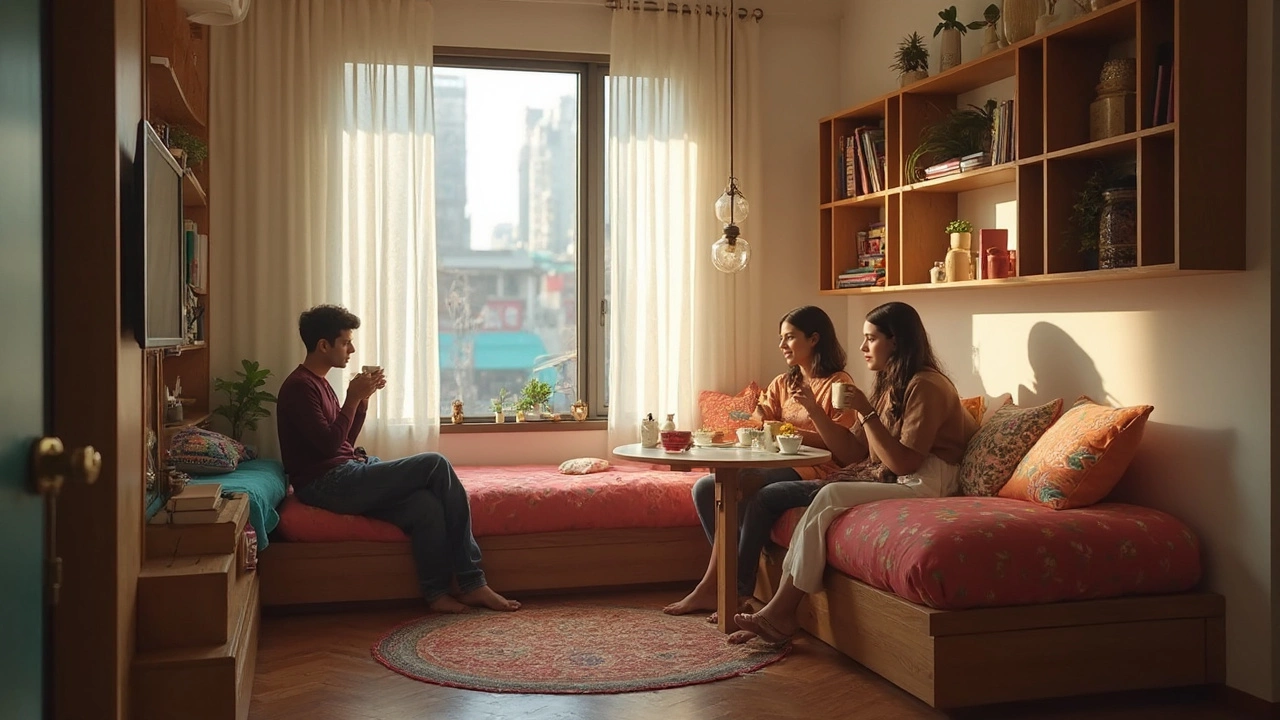Tiny Living Made Easy: Simple Hacks for Small Spaces
Thinking about downsizing? You don’t have to sacrifice comfort just because your floor plan is modest. Tiny living is all about using every inch wisely and creating a space that feels open, functional, and personal. Below are some real‑world ideas you can start using today, whether you’re eyeing a studio in Shriram Chirping Woods or a compact flat in the city.
Why Tiny Living Works
First off, smaller homes cost less to buy, heat, and maintain. That means lower bills and more money for travel, hobbies, or that weekend getaway you’ve been dreaming about. Plus, a tidy, focused environment can boost productivity and reduce stress. You’ll notice fewer things to clean, and the limited space naturally encourages you to keep only what you truly love.
Another perk is flexibility. When you own or rent a tiny place, moving becomes less of a headache. Fewer belongings mean quicker pack‑ups and cheaper moving services. And if your lifestyle changes—say, you need a home office or a nursery—you can adapt without major renovations.
Tips to Maximize a Small Home
1. Choose Multifunctional Furniture. Look for pieces that double up, like a sofa bed, a coffee table with storage, or a desk that folds away. A wall‑mounted desk can free up floor space when you’re not working, and a daybed can serve as both seating and a guest bed.
2. Use Vertical Space. Tall shelves, hanging racks, and wall‑mounted cabinets draw the eye upward, creating the illusion of height. Install hooks for bikes, bags, or coats instead of floor stands. Even a simple floating shelf above the kitchen sink can hold spices and free up countertop area.
3. Stick to Light Colors. Light shades reflect more light, making rooms feel larger. Paint walls in soft whites, pale greys, or muted pastels. Pair them with light wood or glass furniture to keep the vibe airy.
4. Declutter Regularly. The golden rule of tiny living is to keep only items you use or truly love. Set a schedule—maybe monthly—to review belongings and donate or sell what’s not essential. A clean, uncluttered room automatically feels bigger.
5. Add Mirrors. A strategically placed mirror can double the visual space. Hang one opposite a window to bounce natural light around, or use a full‑length mirror as a decorative piece that also serves a practical purpose.
6. Define Zones. Even in a studio, you can separate sleeping, working, and cooking areas with rugs, room dividers, or different lighting. This helps your mind switch between functions and prevents the space from feeling chaotic.
7. Optimize Storage. Use under‑bed drawers, stair risers with hidden compartments, and built‑in closets that reach the ceiling. When every storage spot is thought out, you’ll never feel cramped.
Remember, tiny living isn’t about restriction—it’s about intentional design. By applying these straightforward tricks, you’ll turn a modest footprint into a cozy, efficient home that fits your lifestyle perfectly.
Ready to start? Take a look at listings in Shriram Chirping Woods and imagine how these ideas could transform a compact unit into your dream sanctuary. Tiny spaces have big potential—make the most of it today.

Is 500 Square Feet Too Small for 2 People? The Real Pros, Cons & Solutions
Wondering if two people can live comfortably in a 500-square-foot 2BHK apartment? This article digs into what it's really like to share a small space, including layout tricks, what to expect day-to-day, and smart storage ideas. We'll walk through the challenges and wins of compact living, plus offer tips collected from real families who make it work. Get clear advice on organization, privacy, and daily routines—without sugarcoating the realities. The goal? Help you decide if cozy living fits your lifestyle, or if a bit more space is worth the stretch.




